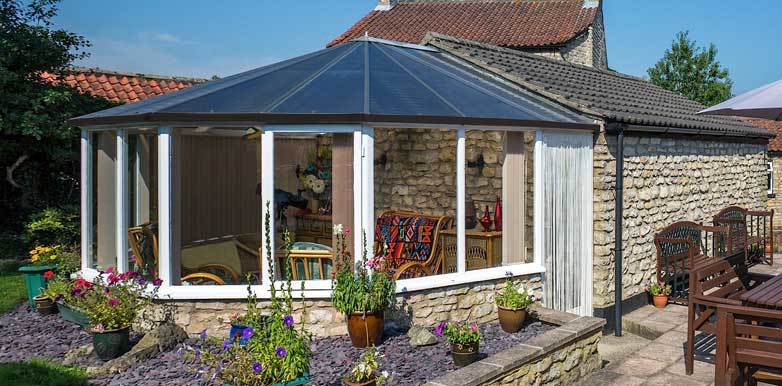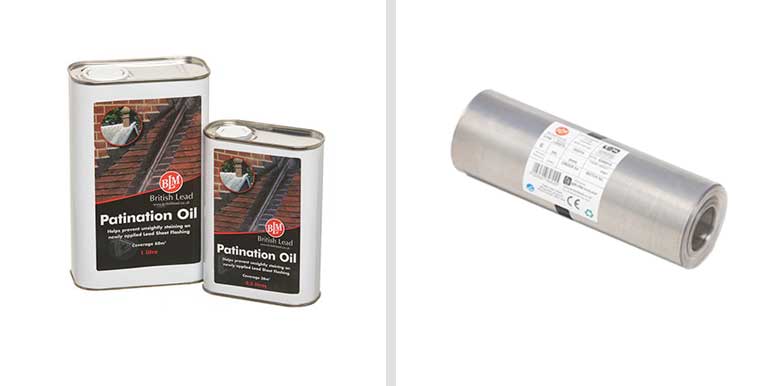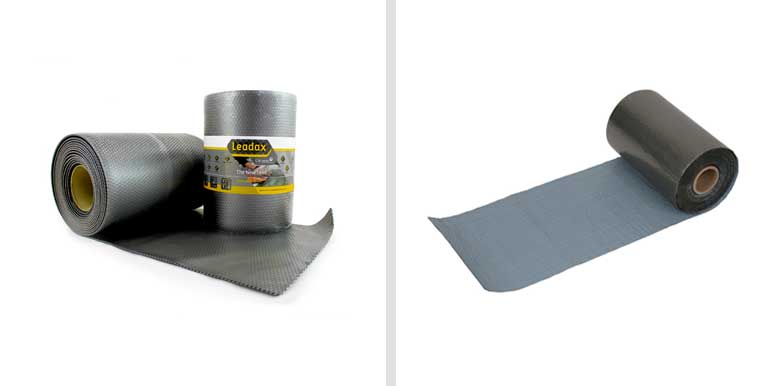Lead vs Lead Alternative: Which Flashing Is Right for You

Lead flashing has been used for centuries to seal gaps around doors, windows and at wall abutments. It is an integral part of any roof, preventing the entry of rainwater and safeguarding from the dangers of mould, mildew and rot. Typically, there are two kinds of flashing: Apron, which is when flashing is used to seal vulnerable areas where a roof plane meets a vertical surface, such as at a solar panel.
The second type is step flashing, which is used when the roof abuts brickwork. This could be chimney or the at the join of a conservatory. Whilst there are many different kinds of materials that can be used for flashing, lead is by far the most common, and for good reason.
Table of Contents
- Benefits of Lead Flashing
- Drawbacks of Lead Flashing
- Alternatives to Lead Flashing
- What Is the Best Type of Roof Flashing Material to Use?
Benefits of Lead Flashing
Versatility
Lead is highly mailable and can be shaped to fit most angles. As the go-to flashing material for past couple of centuries, it is naturally available in a multitude of different sizes and thicknesses. These differences are most commonly referred to as ‘codes’ which make it very simple to determine what kind of lead flashing is required for any given job. As an example, code 3, having the lowest profile, would be suitable for use against a chimney stack whereas code 8 would be more at home being used on parapets, valleys and dormers.
|
Lead Code |
Thickness (mm) |
Approx. Weight (kg/m²) |
|
3 |
1.3 |
15.0 |
|
4 |
1.8 |
20.4 |
|
5 |
2.2 |
25.4 |
|
6 |
2.7 |
30.0 |
|
7 |
3.1 |
35.7 |
|
8 |
3.6 |
40.2 |
Learn more about lead codes.
Durability
Often listed with decade long guarantees, it is a commonly known fact that lead flashing can last hundreds of years without the need for much maintaince. It is, without a doubt, one of the longest lasting options and if fitted correctly will only need a bi-annual check for general wear and tear.
Environmentally friendly
Whilst we are running out of locations to mine lead, the material itself is fully recyclable. In fact, the majority of lead used for flashing will have come from sustainable sources, which is one of the reasons why it is listed in the BRE Green Guide as an eco-product.

Drawbacks of Lead Flashing
Unfortunately, nothing is perfect, and lead flashing is no exception. Despite being a durable a robust solution there are a few factors that can make the alternatives look more appealing.
The Cost
As a naturally occurring material, there is a finite amount of lead in the world, and like any situation where there is an increase in demand and a decrease in supply, the price of lead flashing has increased quite significantly over the years. Now, there is an argument to be made that because of the flashings longevity it will eventually pay for itself. However, this is entirely dependent on the scope and budget of your project.
Not only this, but as lead holds on to it’s value flashing produced from it can be a far more tempting target for thieves. While this occurs more commonly on larger and older buildings, such as churches, the possibility can be enough to deter potential buyers.
Lead Poisoning Levels
It is no secret that lead can be poisonous. As such, proper precautions always need to be taken to protect both the occupants and builders. This includes wearing gloves and washing your hands, face and other exposed areas with soap and water after working. You should also make sure that the lead is covered with patination oil.
Other than giving your lead a uniform colour this oil will also prevent lead carbonate from forming on the surface. A white powder that can form on the flashing when it is exposed to rainwater, lead carbonate is toxic and when washed down onto adjoining roof tiles leaves unsightly stains.
Alternatives to Lead Flashing
For some, these drawbacks have been enough for them to want to look elsewhere. Fortunately, with the advent of new technology and manufacturing techniques, plenty of lead flashing alternatives are now readily available. Here are a few that may be worth considering if you are on the fence.
Polycarbonate Wall Flashing
As the name suggests, polycarbonate wall flashing is perfect for use alongside . This flashing, packaged as a roll, is an exceptionally strong adhesive tape that provides a tight, waterproof seal. Unlike lead it has very little re-sell value and thus is very unappealing to potential thieves.
Being an adhesive, it is quick and easy to install on a range of construction materials, including brickwork and can shaped, by hand, for various applications.
Cromar Leadax
Favoured for its non-toxicity, Cromar Leadax is more cost effective than lead whilst still matching its strength and durability. Easier to handle and install, this alternative is 75% lighter, comes in a range of widths and is guaranteed to last 20 years.
Manufactured using non-toxic recycled polyvinyl butyral (PVB) - the same as foil used in laminated glass - Leadex possess a similar appearance to lead and can be used across the majority of construction materials for both flat and pitched roofs.

Manthorpe Smartflash
Another safe alternative that mimics the performance and appearance of lead, the Manthorpe Smartflash has been produced from an expandable aluminium mesh for increased durability. Like the polycarbonate, this flashing can be installed easily using it adhesive backing but is also available in a choice of four widths, increasing its range of applications and decreasing any potential wastage. It is UV-resistant, weatherproof, watertight and insoluble.
What Is the Best Type of Roof Flashing Material to Use?
There is a reason lead has remined the primary material for flashing for all these years. Nothing, as of yet, has been able to beat it in terms of reliability and longevity. As long as appropriate safety precautions are taken, lead flashing is still the recommended choice for large residential, commercial or industrial builds. That being said, you might be asking yourself, ‘when should I not use lead?’
If you are concerned about potential toxicity, are working to a budget or have a run of polycarbonate glazing, the alternatives listed above would more than likely make for a better choice. These alternatives would also be far more suitable for smaller DIY projects, like garden buildings.
At the end of the day, the purpose of roof flashing is to protect your roof and provide a clean finish. The material you choose should always be chosen with these two factors in mind. If you are unsure of what your project requires, get in touch via our online chat or direct at 01295 565 565. We will be more than happy to help find the best flashing to suit your needs.